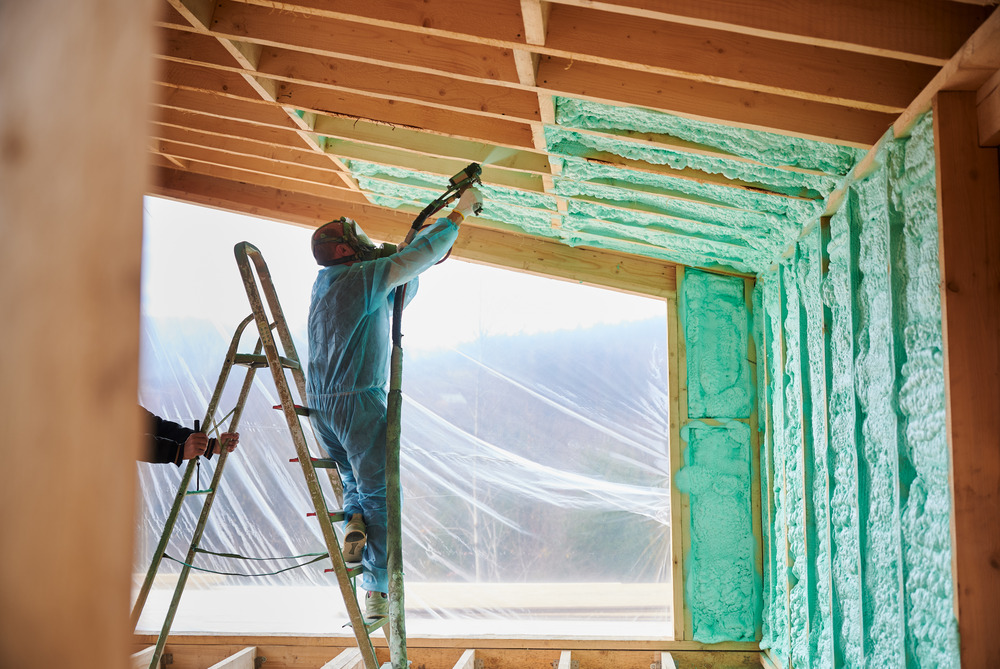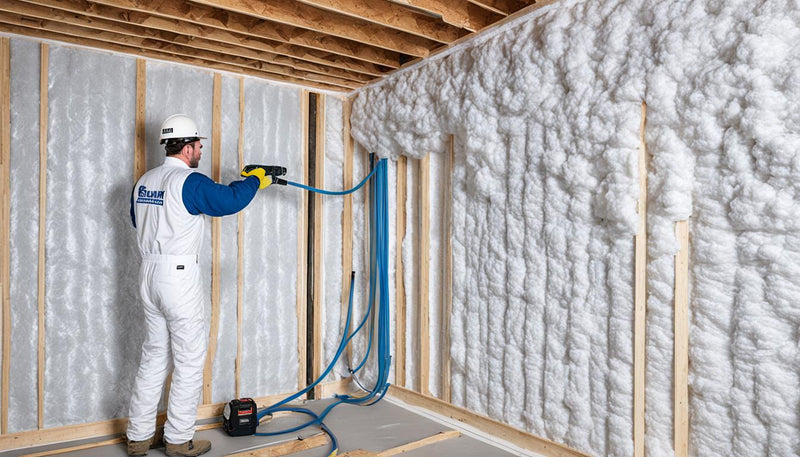Spray Foam: The Ultimate Solution for Air Sealing and Insulation
Spray foam insulation has actually arised as a leading option for efficient air securing and thermal insulation, using a special combination of properties that establish it apart from typical approaches. Recognizing the full scope of its benefits, installment procedures, and contrasts with various other insulation types is essential for making informed choices.
What Is Spray Foam?
Spray foam is a flexible insulation material that combines the concepts of air sealing and thermal resistance to enhance power effectiveness in buildings. Made up mostly of polyurethane or other comparable substances, spray foam is applied as a liquid that increases upon contact with surface areas, producing a solid, continuous layer of insulation. This unique building permits it to fill up gaps, cracks, and gaps that standard insulation materials might forget, giving a remarkable air seal.
There are two major kinds of spray foam: open-cell and closed-cell. Open-cell spray foam is lighter and extra versatile, providing excellent audio absorption and a lower R-value per inch - Spray Foam. In contrast, closed-cell spray foam is denser, supplying a higher R-value, dampness resistance, and included structural honesty to building parts
The application process generally includes specific tools, guaranteeing a smooth application that complies with different substratums, including wood, steel, and concrete. This versatility makes spray foam ideal for both new buildings and retrofitting existing frameworks. Its capability to develop an airtight barrier dramatically contributes to lowering energy usage and boosting interior air quality, consequently making it a recommended selection among building contractors and homeowners alike.
Advantages of Spray Foam Insulation
Among one of the most significant advantages of spray foam insulation is its extraordinary capacity to develop a continual air obstacle, which effectively minimizes energy loss. Unlike traditional insulation materials, spray foam expands to fill splits and voids, making certain that air leak is significantly decreased. This characteristic not only enhances energy efficiency however likewise brings about lower utility bills in time.
Furthermore, spray foam insulation gives remarkable thermal resistance, adding to a more steady indoor environment. Its high R-value per inch allows for efficient insulation in restricted rooms, making it ideal for attics, walls, and crawl areas. The moisture-resistant properties of spray foam aid protect against mold and mildew and mildew growth, advertising much healthier living conditions.
An additional crucial advantage of spray foam insulation is its sound-dampening high qualities (Spray Foam). It efficiently lowers noise transmission in between spaces, creating a quieter and a lot more comfortable home setting. The toughness of spray foam additionally stands apart, as it does not droop or clear up over time, preserving its efficiency throughout its life expectancy
Just How Spray Foam Works
Recognizing how spray foam insulation functions is important for valuing its efficiency in air securing and thermal resistance. Spray foam insulation includes 2 primary elements: isocyanate and polyol material. When these elements are combined, they undergo a chemical reaction that creates the material to broaden swiftly, creating a thick foam that loads spaces, splits, and cavities.
As the foam broadens, it complies with surfaces, developing an impermeable seal that substantially lowers air infiltration. This particular makes spray foam insulation very reliable at stopping drafts and dampness penetration, which can result in power loss and damages with time. In addition, the closed-cell variant of spray foam provides remarkable thermal resistance as a result of its stiff structure, successfully minimizing heat transfer.
The one-of-a-kind buildings of spray foam allow it to satisfy uneven surface areas, making certain comprehensive coverage and a seamless barrier. Consequently, spray foam insulation not only boosts power efficiency but likewise adds to enhanced interior air top quality by lowering the accumulation of pollutants and allergens. Eventually, comprehending the auto mechanics behind spray foam highlights its duty as a premium choice for insulation and air securing in both household and look what i found business applications.
Installation Process Review

Before setup, the room must be appropriately cleaned and prepped, making sure that surface areas are devoid of wetness, particles, and dust. Due to the fact that impurities can compromise bond and total performance, this step is important. As soon as the location is prepared, the application includes mixing the 2 components of the spray foam, which broadens upon get in touch with and original site fills up voids effectively.
Trained specialists should carry out the setup, making use of specialized devices to ensure uniform coverage and optimal thickness. Safety and security preventative measures, including wearing protective gear and making sure proper air flow, are vital during this procedure. After application, the foam normally treatments quickly, creating a strong obstacle that enhances energy performance.
Contrasting Spray Foam to Traditional Insulation
When reviewing insulation alternatives, spray foam insulation stands out in contrast to conventional products such as fiberglass and cellulose. Among the key advantages of spray foam is its superior air sealing capabilities. Unlike fiberglass and cellulose, which can enable air seepage, spray foam broadens upon application, loading spaces and holes to produce an airtight seal. This causes enhanced energy performance, as much less warmed or cooled air gets away the home, bring about lower energy costs.
Additionally, spray foam supplies a greater R-value per inch than conventional insulation types, using more reliable thermal resistance in a thinner profile. This particular is specifically helpful precede with minimal cavity depth. Furthermore, spray foam is immune to dampness and mold development, which can be a significant worry about cellulose and fiberglass, particularly in damp settings.
Nonetheless, spray foam insulation usually carries a higher ahead of time expense than its traditional equivalents. Homeowners have to weigh this first investment versus long-term energy savings and performance advantages. Ultimately, while both insulation types offer their objective, spray foam emerges as a more sophisticated solution for contemporary insulation demands, particularly in terms of air securing and thermal performance.

Conclusion
In summary, spray foam insulation represents a highly efficient service for accomplishing optimum air securing and thermal resistance. Its unique homes, consisting of wetness resistance and audio dampening, make it suitable for various applications in both new constructions and retrofitting tasks (Spray Foam). Although the initial costs may be greater contrasted to typical insulation products, the lasting advantages, such as substantial power financial savings and boosted interior air top quality, validate the investment and underscore its value in modern structure techniques.
Spray foam insulation has actually emerged as a leading service for reliable air sealing and thermal insulation, offering an one-of-a-kind combination check here of homes that set it apart from typical techniques.Spray foam is a versatile insulation product that combines the concepts of air sealing and thermal resistance to enhance power efficiency in buildings.When evaluating insulation options, spray foam insulation stands out in contrast to conventional products such as fiberglass and cellulose. Eventually, while both insulation kinds serve their function, spray foam arises as a more sophisticated solution for contemporary insulation demands, particularly in terms of air sealing and thermal performance.
In summary, spray foam insulation represents a very effective option for achieving ideal air securing and thermal resistance.